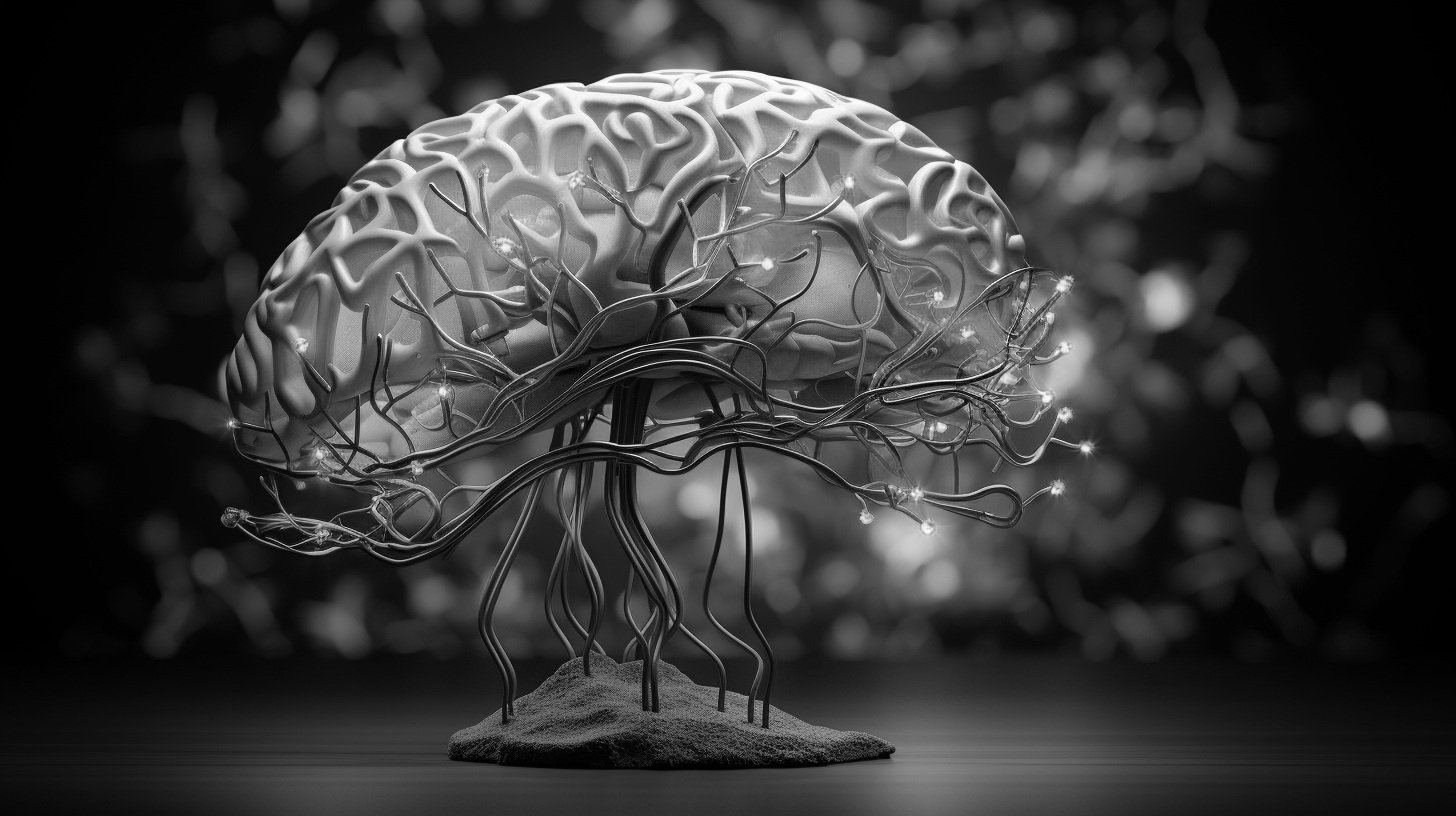The AGES Model: Upgrading Your Learning and Habit Formation
We live in a world that’s constantly bombarding us with new information, making it harder than ever to keep up and retain what we learn. But what if I told you there’s a way to hack your brain’s learning process to make it more efficient and effective?
The AGES Model stands for Attention, Generation, Emotion, and Spacing. It’s a nifty framework developed by Dr. David Rock, rooted in the latest neuroscience research.
This model breaks down the science of learning into four simple yet powerful components that can help you not just learn but truly internalize new information and form lasting habits.
So, grab a comfy seat, maybe a cup of coffee, and let’s go on this journey together to unlock the secrets of your brain with the AGES Model. Ready to give your learning a boost? Let’s get started!
What exactly is the AGES Model?
Attention: This is all about where your focus goes. When you’re learning something new, giving it your full, undivided attention is crucial. Our brains are wired to prioritize what we focus on, so the more attention you give to something, the more likely you are to remember it. We’ll dive deeper into this shortly, but just know that mastering your attention is the first step.
Generation: Have you ever noticed how you remember things better when you actively engage with them, like teaching someone else or applying the knowledge in a real-world scenario? That’s what generation is about. It’s the process of creating and generating information in your mind rather than passively consuming it. This active involvement helps solidify new knowledge.
Emotion: Emotions play a massive role in how well we learn and retain information. When you’re emotionally invested in something, your brain tags it as important and worth remembering. We’ll explore how to leverage your emotions to boost your learning and make those memories stick.
Spacing: Cramming might get you through a test, but if you want long-term retention, spacing out your learning is the way to go. Spacing involves spreading out your learning over time, allowing your brain to rest and consolidate the information. This method is proven to enhance memory retention significantly.
The AGES Model is about understanding how your brain works and using that knowledge to learn more effectively.
Attention
Let’s kick things off with Attention, the first pillar of the AGES Model. Think of attention as the spotlight on a stage – whatever it shines on becomes the star of the show. In the context of learning, what you focus your attention on gets encoded into your memory, making it easier to recall later.
But distractions are everywhere! From buzzing smartphones to the constant stream of notifications, our attention is under siege. So, you need to become a master at managing distractions and directing your focus.
The Science Behind Attention
Neuroscience tells us that attention is a limited resource. Our brains can only handle so much information at once, so it’s crucial to make the most of it.
The prefrontal cortex, the part of the brain responsible for complex cognitive behavior and decision-making, plays a key role in controlling attention. When you focus on a task, this area of your brain works hard to filter out distractions and keep you on track.
Strategies to Enhance Attention
So, how do you ensure your brain’s spotlight is shining where it needs to? Here are some practical strategies:
Eliminate Distractions: Create an environment that minimizes interruptions. Turn off notifications, find a quiet place, and set specific times for focused work.
Mindfulness and Meditation: Practices like mindfulness meditation can train your brain to maintain focus and improve your attention span. Even a few minutes a day can make a big difference.
Breaks and Downtime: Your brain isn’t designed to focus non-stop. Taking regular breaks can help refresh your attention and keep you productive. Try the Pomodoro Technique – 25 minutes of focused work followed by a 5-minute break.
Prioritize Sleep: A well-rested brain is much better at paying attention. Make sure you’re getting enough quality sleep to keep your cognitive functions at their best.
Single-tasking Over Multitasking: While it might feel like you’re getting more done, multitasking actually reduces the quality of your attention and efficiency. Focus on one task at a time for better results.
Imagine you’re preparing for an important exam or learning a new skill at work.
By applying these attention-enhancing strategies, you’ll find that you can absorb and retain information more effectively. Instead of reading a chapter while checking your phone every few minutes, set aside dedicated, distraction-free time to study.
You’ll be amazed at how much more you remember.
Generation
Next up in the AGES Model is Generation. This might sound a bit technical, but stick with me – it’s all about making learning stick through active engagement.
Generation involves creating and generating information in your mind rather than just passively consuming it. It’s the difference between passively listening to a lecture and actively participating in a discussion.
When you generate knowledge, you’re making it your own, which significantly enhances retention and understanding.
The Science Behind Generation
When you actively engage with information, your brain forms stronger and more numerous connections between neurons. This process, known as synaptic plasticity, is key to long-term memory.
Think of it like this: the more ways you interact with a piece of information, the more “hooks” your brain creates to retrieve that information later. This is why teaching someone else what you’ve learned or applying knowledge in real-life situations can be so effective.
Strategies to Promote Generation
So, how can you make sure you’re generating knowledge rather than just passively taking it in? Here are some practical strategies:
Teach Someone Else: One of the best ways to solidify your understanding of a topic is to explain it to someone else. This forces you to organize your thoughts and articulate them clearly, reinforcing your own learning in the process.
Apply What You Learn: Don’t just read about concepts – put them into practice. Whether it’s a new language, a coding skill, or a business strategy, use it in real-life scenarios. This hands-on approach makes the learning experience more concrete and memorable.
Ask Questions: Engage with the material by asking questions. Why does this work this way? How does this concept apply to what I already know? This kind of active questioning stimulates deeper thinking and helps integrate new knowledge with existing knowledge.
Create Mind Maps: Visual tools like mind maps can help you generate connections between different pieces of information. This not only helps in organizing your thoughts but also in seeing the bigger picture.
Write It Down: Whether it’s through journaling or taking detailed notes, writing forces you to process and reframe the information in your own words, making it more likely to stick.
Let’s say you’re learning a new programming language.
Instead of just watching tutorial videos, try writing your own small programs or teaching a friend what you’ve learned. If you’re studying history, don’t just read the textbook – create a timeline or a story map to connect events and understand their sequence and significance.
Or, if you’re mastering a new business strategy, try running a small project where you apply these strategies in real time. Share your insights and results with colleagues to further reinforce your learning.
Now that we’ve got a handle on how generation can boost your learning, let’s move on to the next component of the AGES Model: Emotion. Trust me, this one’s going to be fascinating! :)
Emotion
You might be wondering, what do emotions have to do with learning? As it turns out, a lot. Emotions are like the glue that makes your memories stick. When you’re emotionally engaged with something, your brain tags it as important, making it much easier to recall later.
The Science Behind Emotion
Our brains are wired to prioritize emotional experiences. The amygdala, a small almond-shaped structure in the brain, plays a key role in processing emotions and is closely linked with memory formation.
When you experience something emotionally significant, the amygdala activates and enhances the encoding of that memory in the hippocampus, the part of the brain responsible for forming new memories.
This means that when you’re emotionally invested in what you’re learning, your brain is more likely to remember it. Positive emotions, in particular, can boost your motivation and engagement, making the learning process not just more effective, but also more enjoyable.
Strategies to Leverage Emotion
So, how can you harness the power of emotions to enhance your learning? Here are some practical strategies:
Connect Learning to Personal Goals: Link new information to your personal interests or long-term goals. When you see the relevance of what you’re learning to your own life, it becomes more meaningful and engaging.
Use Storytelling: Stories are powerful tools for evoking emotions. Incorporate narratives into your learning process. Whether you’re studying history, science, or business, framing information as a story can make it more relatable and memorable.
Celebrate Small Wins: Reward yourself for progress. Recognizing and celebrating small achievements along the way can boost your motivation and keep you emotionally invested in your learning journey.
Visual and Sensory Engagement: Use visuals, sounds, and other sensory inputs to create an immersive learning experience. Colorful diagrams, videos, and hands-on activities can evoke emotions and make learning more enjoyable.
Reflect on Emotional Responses: Take time to reflect on how learning makes you feel. Journaling about your experiences and emotional responses can deepen your understanding and help consolidate your memories.
Imagine you’re learning about a complex scientific concept.
Instead of just reading dry facts, find a documentary or a story about a scientist who made a breakthrough in that field. By connecting the information to a human experience, you’ll find it much easier to remember and understand.
Or, if you’re trying to master a new project management tool, think about how using this tool can help you achieve your career goals or make your work more efficient. Visualize the positive impact it will have, and let that emotional connection drive your learning.
Now that we’ve seen how emotions can supercharge your learning, let’s move on to the final component of the AGES Model: Spacing. This one’s a game-changer for long-term retention!
Spacing
And now we arrive at the final piece of the AGES Model: Spacing. Imagine you’re cramming for an exam the night before – you might manage to remember some information short-term, but chances are it’ll fade quickly.
Spacing, on the other hand, is all about spreading out your learning over time to cement knowledge in your long-term memory.
The Science Behind Spacing
The concept of spacing is grounded in decades of cognitive psychology research. Our brains are not designed to retain large amounts of information crammed in all at once. Instead, they benefit from repeated exposure to the same information over longer intervals.
This phenomenon, known as the spacing effect, helps to reinforce neural connections and improve retention.
When you learn something new, it’s initially stored in short-term memory. If you revisit the information periodically, it gets transferred to long-term memory. Each time you recall and use that information, the neural pathways strengthen, making it easier to remember in the future.
Strategies to Implement Spacing
So, how do you put spacing into practice? Here are some effective strategies:
Plan Your Study Schedule: Instead of trying to learn everything in one go, break your study sessions into smaller chunks spread over several days or weeks. For example, if you have an upcoming exam, start studying well in advance and review the material regularly.
Use Spaced Repetition Systems (SRS): Tools like flashcards and apps (e.g., Anki) that use spaced repetition algorithms can help you review information at optimal intervals. These systems automatically adjust the frequency of reviews based on how well you know each piece of information.
Mix-Up Subjects: Rather than focusing on one subject for long periods, alternate between different subjects or topics. This also keeps your brain engaged by varying the type of information it processes.
Review Previous Material: Regularly revisit what you’ve learned, even if you feel confident about it. This can be as simple as a quick review at the start of each study session to reinforce past lessons before moving on to new content.
Practice Recall: Test yourself on the material at spaced intervals. Self-quizzing is a powerful way to reinforce learning, as it requires active retrieval of information, further strengthening those neural pathways.
Let’s say you’re learning a new language.
Instead of trying to memorize a huge list of vocabulary words in one sitting, learn a few words each day and review them regularly. Use language learning apps that use spaced repetition to help you retain those words over time.
Or, if you’re onboarding new employees, don’t overwhelm them with all the information in their first week. Spread the training out over a few weeks, with regular check-ins and reviews. This approach not only makes the learning more manageable but also ensures they retain the information better.
So, there you have it – the AGES Model in all its glory! By focusing on Attention, Generation, Emotion, and Spacing, you can transform the way you learn and form habits.
Ready to put these strategies into practice and see the difference for yourself?
Practical Applications and Tools
How can you apply this knowledge in your daily life? What tools can help you implement these strategies effectively? Let’s dive into some real-world applications and handy tools that can make the AGES Model work for you.
Tools for Enhancing Attention
Focus Apps: Tools like Forest and Focus@Will are designed to help you maintain attention. Forest uses gamification to encourage you to stay off your phone, while Focus@Will provides background music scientifically designed to improve focus.
Pomodoro Timers: The Pomodoro Technique, which involves working for 25 minutes followed by a 5-minute break, can be facilitated by apps like Pomodone. It will help you break your work into manageable chunks and keep track of your focus and break times.
Mindfulness Apps: Apps like Headspace and Calm offer guided meditation sessions that can improve your attention span and help you manage stress, making it easier to focus on your tasks.
Tools for Promoting Generation
Flashcard Apps: Spaced repetition apps like Anki and Quizlet help you actively recall information over spaced intervals, reinforcing your learning through generation.
Mind Mapping Tools: Tools like MindMeister and XMind allow you to create visual representations of your ideas and concepts, helping you generate connections and see the bigger picture.
Collaborative Platforms: Using platforms like Google Docs and Notion can facilitate collaborative learning and teaching. Share your notes, teach your peers, and engage in discussions to reinforce your understanding.
Tools for Leveraging Emotion
Storytelling Platforms: Apps like Prezi and Canva can help you create engaging presentations that incorporate storytelling elements. These tools make it easy to add visuals and narratives to your learning materials.
Gratitude Journals: Keeping a gratitude journal with apps like Day One can help you maintain a positive emotional state, which can enhance your learning experience.
Goal-Setting Apps: Tools like Goals on Track and Strides help you set and track your goals, providing a sense of achievement and emotional satisfaction as you progress.
Tools for Implementing Spacing
Spaced Repetition Systems (SRS): As mentioned, apps like Anki and SuperMemo use algorithms to schedule your reviews at optimal intervals, ensuring that you revisit material just when you’re about to forget it.
Scheduling Tools: Use calendar apps like Google Calendar to plan your study sessions and ensure you’re spacing out your learning over time. Set reminders to revisit previous material regularly.
Project Management Tools: Platforms like Trello and Asana can help you organize your learning projects, breaking them down into manageable tasks and setting deadlines to ensure consistent progress and review.
Imagine you’re preparing for a certification exam.
Here’s how you could use these tools in combination with the AGES Model:
Attention: Use Focus@Will to create a conducive study environment with background music that enhances focus. Schedule study sessions with the Pomodoro Technique using Be Focused to keep your attention sharp.
Generation: Create flashcards on Anki to actively recall information. Use MindMeister to map out complex concepts and understand their interconnections. Collaborate with peers on Google Docs to teach and discuss material.
Emotion: Develop engaging presentations with Canva to make your study sessions more interesting. Maintain a gratitude journal on Day One to keep a positive mindset. Set and track study goals using Goals on Track to stay motivated.
Spacing: Schedule your study sessions and review periods on Google Calendar, ensuring you space out your learning. Use Anki’s spaced repetition system to regularly revisit flashcards. Organize your study tasks on Trello to maintain consistent progress.
By integrating these practical tools with the principles of the AGES Model, you can optimize your learning process, enhance retention, and make studying a more enjoyable and effective experience.
Ready to see the difference these tools can make? :)




























